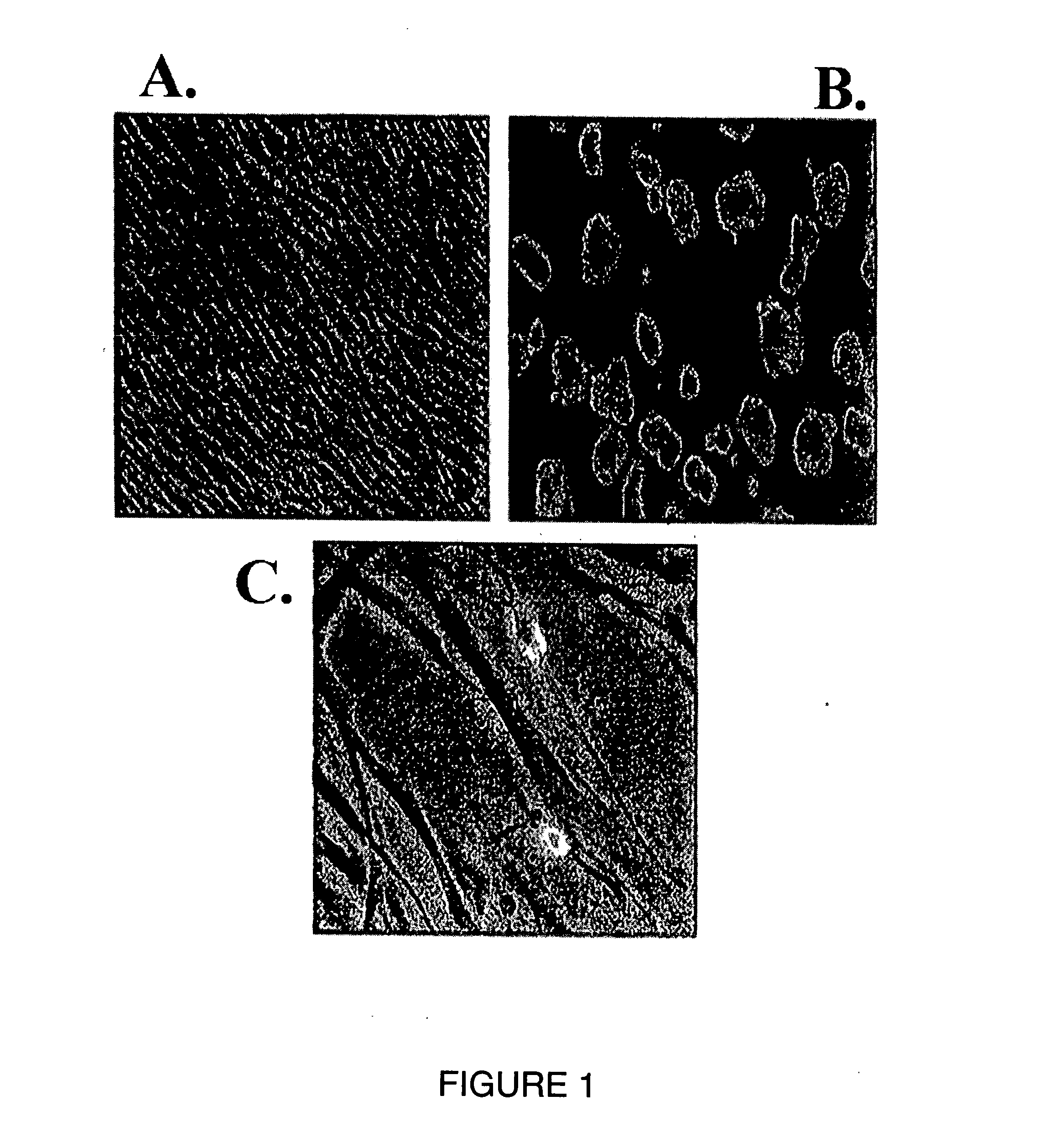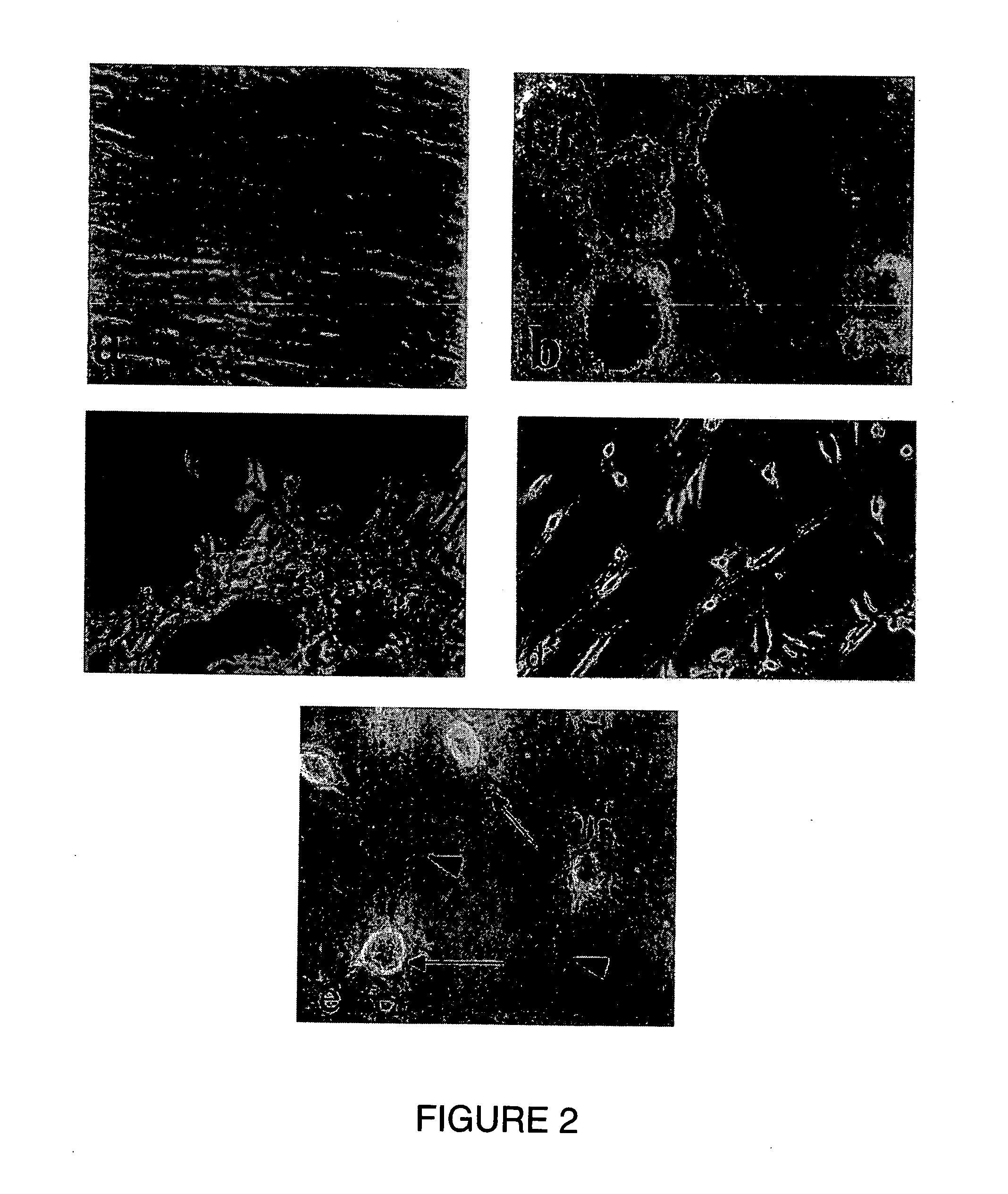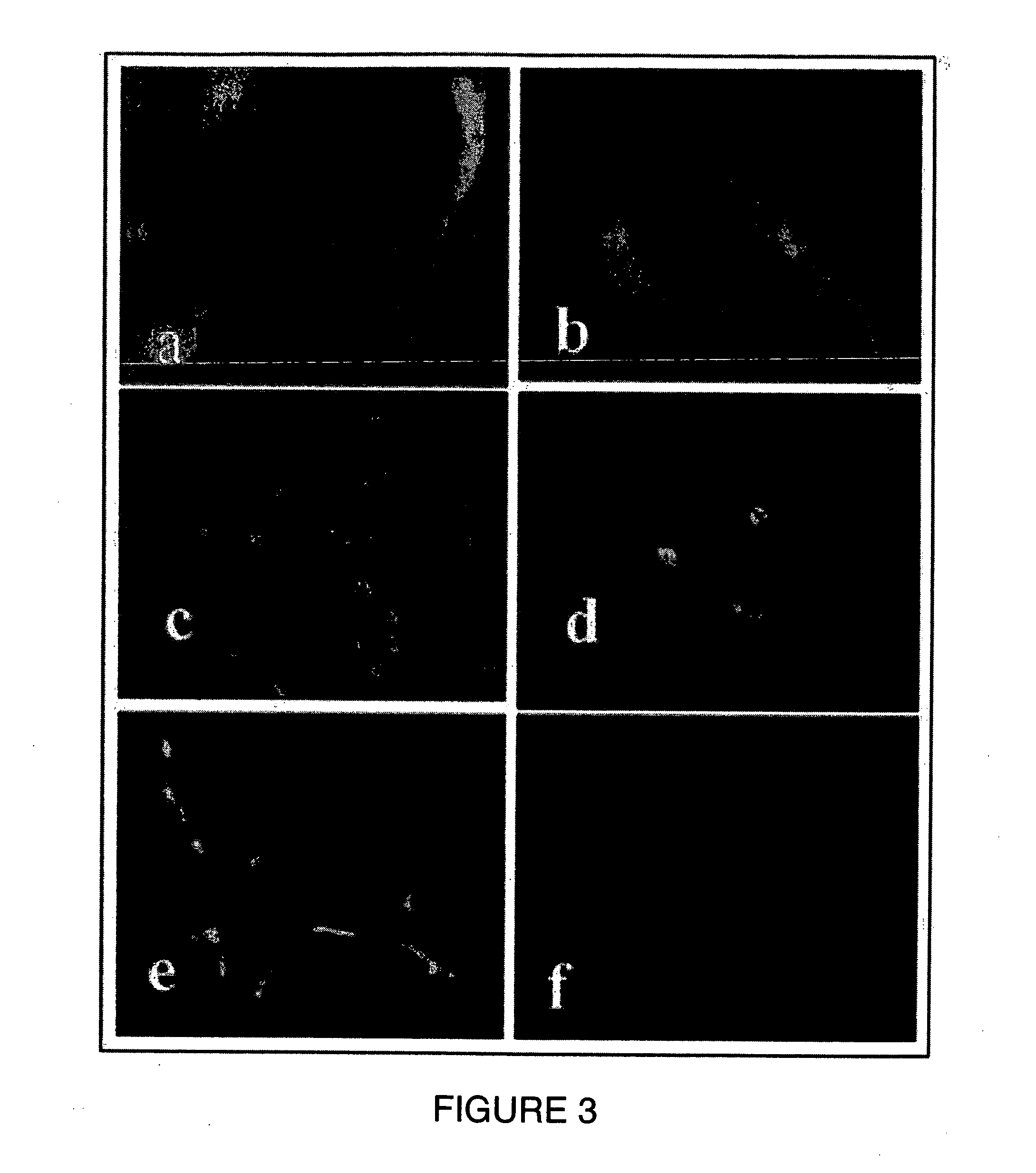Dopaminergic neurons derived from corneal limbus, methods of isolation and uses thereof
a technology of dopaminergic neurons and corneal limbs, applied in the field of neural cell generation, can solve the problems of unsatisfactory use of es cells, tissue or cells derived from es cells, and the controversial stem cell research and treatment process, etc., and achieve the effects of improving posture, reducing the risk of es cell injury, and reducing the risk of es cell death
- Summary
- Abstract
- Description
- Claims
- Application Information
AI Technical Summary
Benefits of technology
Problems solved by technology
Method used
Image
Examples
example 1
[0080] Human pluripotent ELSCs were cultured to form embryoid-like bodies (ELBs) by first proliferating and expanding the cells. Next, the cells were cultured on bacteriological plates having a non-adhesive surface that prevented attachment of the ELSCs, and stimulated differentiation of these cells. Briefly, ELSCs were dissociated by briefly exposing them to a 0.05% trypsin-EDTA solution, and subsequently cultured as a suspension culture in ES cell medium containing DMEM:F-12 or knockout DMEM, supplemented with 10-20% fetal calf serum, cord blood serum, or knockout serum replacement. The media was also supplemented with β-mercaptoethanol, L-glutamine, insulin, human transferrin, sodium selenite, but did not contain bFGF or hLIF. The cells were incubated in suspension culture for about 4 days and the media was changed every other day. The medium was changed by transferring the suspension of aggregates to a centrifuge tube, allowing the aggregates to settle down, aspirating the old m...
example 2
[0087] High Efficiency Generation of Dopaminergic Neurons From ELSCs
[0088] Neuroprogenitor cells prepared according to the methods disclosed herein can be further differentiated into high proportions of dopaminergic neurons. In a specific embodiment, the neuroprogenitor cells are differentiated in Neurobasal-A medium, supplemented with 0.5-2% N2, 1-4% B27, GDNF (10-30 ng / ml), Retinoic acid (15-27 ng / ml), db-cAMP (30-60 ,μm) and Interleukin-1β(175-230 pg / ml).(FIG. 2(c)-2(e)).
[0089] Derivation of Dopaminergic Neurons Without Formation of ELBs
[0090] The ELSCs disclosed herein, which were derived from corneo-limbal tissue, can be plated onto extracellular matrix coated plates, preferably coated with poly-L-ornithine and laminin. The cells are then cultured under conditions to encourage further differentiation of the cells into neural precursor cells. For example, the cells may be cultured in serum-free expansion medium, preferably comprising a minimal essential medium, such as Neural...
example 3
[0099] Use of ELSCs in Cell Replacement Therapy
[0100] To generate an animal model of Parkinson's disease, rats were treated with 6-OHDA. Treated rats exhibiting ipsilateral circling behavior; which is moving in a circular pattern more than 20 times per minute in the same direction, were selected as Parkinson-induced rats to be used for further experimentation. 6-OHDA-treated rats represent the most frequently used hemiparkinson model, likely because 6-OHDA treatment consistently promotes asymmetrical and quantifiable motor behavior abnormalities, but does not promote the low survivability and increased need for medical care characteristic of other Parkinson's animal models (Cenci et al., 2002, 23:105-9). Most of the rats treated with 6-OHDA exhibited ipsilateral circling while rats treated with saline did not exhibit this behavior. See FIG. 7.
[0101] To determine if cell transplantation therapy using neuroprogenitor cells derived from ELSCs isolated from corneo-limbus tissue could ...
PUM
| Property | Measurement | Unit |
|---|---|---|
| concentration | aaaaa | aaaaa |
| cell adhesion | aaaaa | aaaaa |
| magnetic | aaaaa | aaaaa |
Abstract
Description
Claims
Application Information
 Login to View More
Login to View More - R&D
- Intellectual Property
- Life Sciences
- Materials
- Tech Scout
- Unparalleled Data Quality
- Higher Quality Content
- 60% Fewer Hallucinations
Browse by: Latest US Patents, China's latest patents, Technical Efficacy Thesaurus, Application Domain, Technology Topic, Popular Technical Reports.
© 2025 PatSnap. All rights reserved.Legal|Privacy policy|Modern Slavery Act Transparency Statement|Sitemap|About US| Contact US: help@patsnap.com



